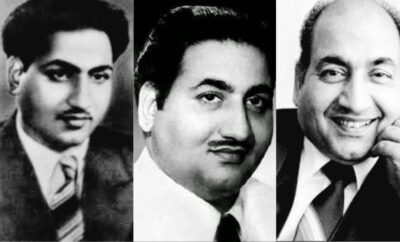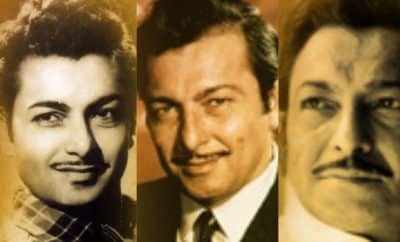Song Sketch
Masterpiece Of Harmony – Humko Tumse Ho Gaya Hai Pyar – Amar Akbar Anthony
If the camera provides the EYESIGHT for what we see on the screen then, the director is a Man with VISION who knows what to present, how to present and most importantly – the ‘Liking’ of the audience.
A movie is a concise audio-video presentation of various forms of arts. It all starts from the basic story line which is converted into a screenplay. Then, it goes through various stages like – selection of artists, writing and recording of songs, shooting of film, editing, processing, etc. before the film is finally released. In this entire journey, the person who is at the centrepiece is the Director. He may not be an expert in song writing, music, acting, etc. But, he must have the ability to visualize, well in advance, how the film will appear on screen after all the finishing touches. The successful director is one who can detract the talent of his team members and make a complete harmony of all the arts involved. And last but not the least – A film making is a business. So, one has to take care of its saleable value also.
Now, with this background, let’s come to my share of such a song. The film is Amar Akbar Anthony (1977). A multicast super hit film directed by Manmohan Desai. The song under consideration is a romantic one and picturised on three lead roles and their fiancees. All the three characters belong to different religions. Their personalities are different; their styles of expressing love are different. They all speak Hindi but their accents are different. So, the first task was to get appropriate lyrics suitable to each personality. Anand Bakshi was expert in writing songs in colloquial language and here he did an absolutely fantastic job. One can observe that the language used in first stanza is Hindi-English mixed, in second stanza is pure Hindi and in the third one, it is Hindi-Udru mixed. Laxmikant Pyarelal used voice of the three top male singers of the era – Mukesh, Rafi and Kishore Kumar for Amar, Akbar and Anthony respectively. Surprisingly for all the three actresses they relied on the voice of one and only Lata Mangeshkar. And she too gave perfect justice to the faith shown by LP, rendering different flavors of her voice for each actress.
This song is picturised on several of locations such as a motor boat, Ghoda Gadi, in house, garden, running train, etc. Also, the tempo of the song keeps on changing from frame to frame. Such variations are necessary to keep the audience engaged. But, if the camera fails to match the speed of the song, the overall effectiveness of the song gets lost. This song could be a milestone example of consistency between music and cinematography. Watch the prelude of the song making a complete harmony with the speedy motor boat, change of dholak rhythm every time when the line – Ab Tak Chhupaye Rakha, Shola Dabaye Rakha occurs and clapping in the third stanza. All these small things play an important role in keeping the attention of audience intact. One more and perhaps the most crucial part in this song is to maintain continuity and harmony in transitions from one scene to another. In this song it is done with so delicacy that it gives an experience of continuous enjoyment. It neither cuts the sequence nor diverts the attention of the audience. It is like a smooth baton exchange in a relay race. Full credit for this, must be given to the director Manmohan Desai and his team members.
There are many songs where I prefer to switch off the video and enjoy only the audio song. Also, there are many songs (especially of the new era) where I prefer to put off the ear phone and enjoy only the pleasant camera work. But, above all, there are such songs which give the experience of complete fulfillment with their splendid audio-visual performance. Such songs are nothing but The BHBS (Best Heard Best Seen) Songs.




Ajay
March 11, 2019 at 6:45 pm
“AMAR AKBAR ANTHONY” 1977. (Historic Moment in Film Music)
It is for the First & Last Time…Four Sensational Singers, Lata Mangeshkar, Mohammad Rafi, Kishore Kumar & Mukesh came at one state to sing this popular & memorable song for Manmohan Desai’s super duper hit film. The song is written by Anand Bakshi and composed by Laxmikant-Pyarelal.
All the three “mukhada” with different tunes, all the three “interludes” have different musical notes.